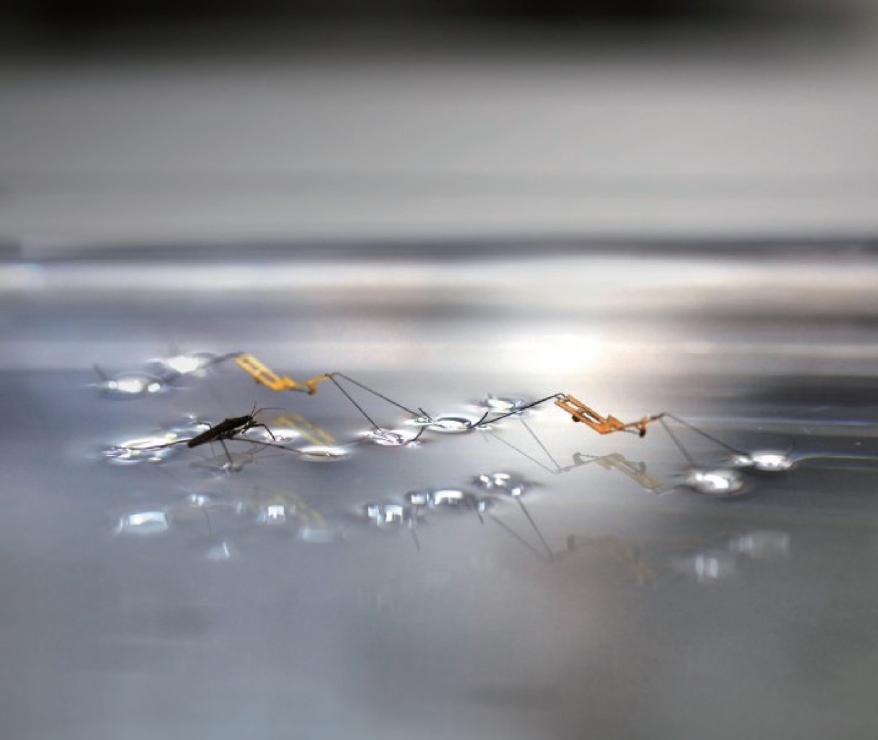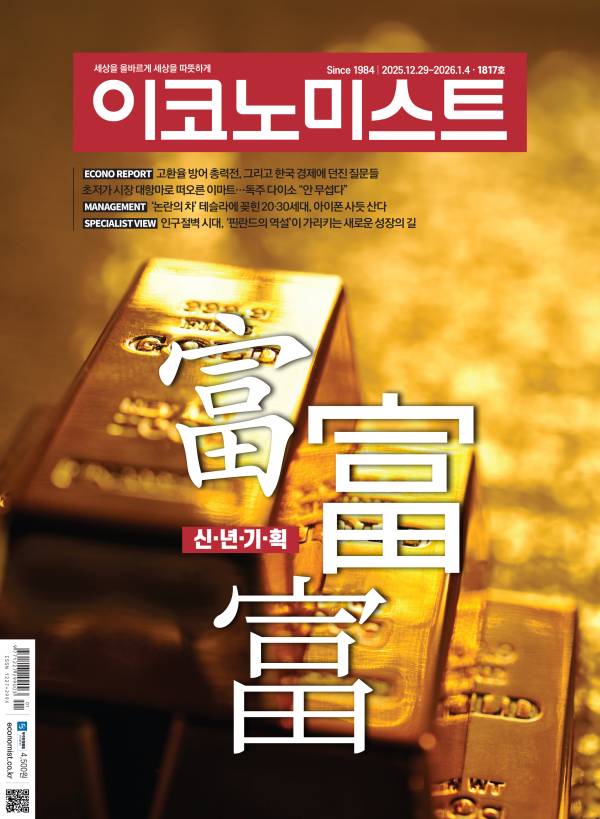- (Free MP3) 물 위를 걷는 로봇

WATER JUMPING ROBOTS
Tiny robots that can jump on water created by scientists.Small robots that jump on water have been created by scientists and could one day be used in surveillance and search and rescue missions.
The team led by Seoul National University’s Je-Sung Koh studied water striders to replicate the insect’s ability to propel itself from the surface of water. When jumping from solid ground, a force is exerted on the ground below and the jumping object can push itself upwards. On water, however, you lose the surface tension force required.
Published in the journal Science, the team watched the water striders leap using high-speed cameras and found how their long legs accelerate gradually, meaning the water surface does not react to the propelling force too quickly and lose contact with the legs.
The team found the maximum force from the water striders’ legs always remains just below the maximum force the water surface tension can withstand. They also noticed how the insect rotated its legs as it took off.
They then applied this knowledge to create a robot using the same principle – something they call a torque reversal catapult (TRC) mechanism. Kyu-Jin Cho, one of the senior authors on the paper, explained: “What was very important for us while building the water jumping robot was to make sure the maximum force does not exceed the maximum surface tension force.
“What we have devised was a very small bio-inspired jumping mechanism called a torque reversal catapult mechanism which applies a small force initially then the force increases gradually and thereby we can maximize the momentum transfer without exceeding the maximum surface tension force. The water strider is rotating its legs to maximize the interaction time between the legs and the water thereby maximizing the momentum transfer.”
In terms of the real-world application, the researchers said their main aim was just to engineer something that can jump on water like some insects can. “It was this challenge that drove us to this research,” they said. “This challenge was interesting to biologists, fluid mechanics researchers and robotics researchers, all alike.
“Our goal was to explore a new possibility of a robot’s aquatic mobility that was never possible before [surface-tension dominated jumping] with even a simple design and thus a low cost. We hope that this novel motility will be incorporated in the next-step research of small scale robots. If these endeavors are added up, we will see those robots only to be seen in movies for now, in reality later.”
They also noted it could be utilized for surveillance in the future: “This robotic technology could probably be used for building large number of robots that can float, and jump on water for surveillance missions.”
They added: “A small insect-mimicking robot cannot perform complicated tasks as large robots [like humanoids] aim to do. But there are situations where you don’t need an expensive large robot but need many small cheap robots carrying out simple tasks over a wide area at the same time. Those applications include surveillance, survivor search in disaster site, etc.
“In the far future, we would like to be able to build a robot that can swim and jump on water and perform various tasks on water for surveillance gathering data from the water surfaces. This would require various other technologies to be also miniaturized, such as the electronics, sensors, and batteries, which cannot be done by just our group.”
물 위를 걷는 로봇

서울대 연구팀이 소금쟁이처럼 수면에서 도약하는 소형 로봇을 개발했다물 위에서 점프하는 소형 로봇이 개발됐다. 언젠가는 정찰·수색·구조 작업에 활용될지 모른다.
서울대학 김호영·조규진 교수팀이 소금쟁이(water striders) 연구 결과를 학술지 사이언스에 발표했다. 수면에서 도약하는 능력을 모방하려는 목적이었다. 단단한 표면에서 도약할 때는 아래 지면에 힘을 가해 도약체가 상방향 추진력을 얻을 수 있다. 그러나 물 위에서는 표면장력(surface tension force)이 그 힘을 버텨내지 못하게 된다.
연구팀은 초고속 카메라를 이용해 소금쟁이의 도약 모습을 관찰했다. 긴 다리로 어떻게 점차 속도를 올려가는지 알아냈다. 수면이 추진력에 너무 빨리 반응하지 않고 다리와 접촉을 계속 유지한다.
소금쟁이 다리의 최대 도약력은 항상 물 표면장력이 버틸 수 있는 한계치를 넘지 않는다는 사실을 연구팀은 알아냈다. 또한 소금쟁이가 도약할 때 다리를 어떻게 회전시키고 모으는지도 파악했다.
그들은 이 같은 원리로 움직이는 로봇을 개발했다. 연구팀은 이를 토크역전사출(TRC) 메커니즘으로 부른다. 논문 작성자 중 한 명인 조규진 교수는 이렇게 설명했다. “수상 도약 로봇을 제작할 때 우리가 가장 중시한 문제는 최대 도약력이 최대 표면장력을 넘지 않도록 하는 것이었다. 우리는 작은 생명체에서 아이디어를 얻어 TRC라는 도약 메커니즘을 고안했다. TRC 메커니즘은 처음에는 약한 힘을 가한 뒤 차츰 강도를 높여간다. 그런 식으로 최대 표면장력을 넘지 않고 운동량 전달(momentum transfer)을 극대화할 수 있다. 소금쟁이는 다리들을 회전하며 가운데로 모아 다리와 물 사이의 상호작용 시간을 최대한 늘리는 식으로 운동량 전달을 극대화한다.”
현실생활 응용 가능성에 관해 연구팀은 몇몇 곤충처럼 물 위에서 도약할 수 있는 기술 개발이 일차 목표였다고 말했다. “이 같은 연구에 착수한 계기는 도약기술의 개발이라는 과제였다”고 그들은 말했다.
“생물학자, 유체역학 학자, 로봇 과학자 모두가 흥미를 갖는 문제였다. 로봇의 수상 이동은 이제까지 불가능했다. 그 새로운 가능성의 탐구가 우리의 목표였다. 단순한 디자인 따라서 적은 비용으로 만들고자 했다. 이동성 신기술이 소형 로봇 연구의 다음 단계에 통합되기를 희망한다. 이 같은 노력들이 계속 쌓이면 영화에서만 볼 수 있는 로봇들이 현실에서도 활용될 것이다.”
장차 정찰에도 활용될 수 있다고 연구팀은 내다봤다. “이 같은 로봇 기술을 이용해 어쩌면 정찰 임무를 맡아 물 위를 떠다니고 도약할 수 있는 로봇을 대량 제작할 수도 있다. 곤충을 모방한 소형 로봇은 (인간형 로봇 같은) 대형 로봇이 추구하는 복잡한 과업을 수행할 수 없다. 하지만 값비싼 대형 로봇 대신 광범위한 지역에서 동시에 단순 작업을 수행하는 저가의 소형 로봇이 대량으로 필요한 상황도 있다. 정찰, 재난 지역 생존자 수색 같은 작업이다.”
연구팀은 “먼 미래에는 물에서 수영하고 도약하며 데이터를 수집하는 정찰 업무 등 다양한 과업을 수행하는 로봇을 제작할 수 있기를 바란다”며 “그러려면 전자부품, 센서, 배터리 등 다른 여러 기술도 소형화해야 한다”고 덧붙였다. “우리 연구팀만으로는 할 수 없는 일이다.”
- HANNAH OSBORNE IBTIMES 기자 / 번역 차진우
ⓒ이코노미스트(https://economist.co.kr) '내일을 위한 경제뉴스 이코노미스트' 무단 전재 및 재배포 금지










![면봉 개수 → 오겜2 참가자 세기.. 최도전, 정직해서 재밌다 [김지혜의 ★튜브]](https://image.isplus.com/data/isp/image/2025/12/21/isp20251221000019.400.0.jpg)
![갓 잡은 갈치를 입속에... 현대판 ‘나는 자연인이다’ 준아 [김지혜의 ★튜브]](https://image.isplus.com/data/isp/image/2025/11/21/isp20251121000010.400.0.jpg)



당신이 좋아할 만한 기사
브랜드 미디어
브랜드 미디어
GC녹십자, 알라질증후군 치료제 '리브말리액', 이달부터 건보 적용
바이오 성공 투자, 1%를 위한 길라잡이이데일리
팜이데일리
이데일리
[단독] 이병헌 "오스카 레이스 아이돌 마음 이해"
대한민국 스포츠·연예의 살아있는 역사 일간스포츠일간스포츠
일간스포츠
일간스포츠
공사현장 지키는 ‘깐부’ 로봇…피지컬 AI가 현실로
세상을 올바르게,세상을 따뜻하게이데일리
이데일리
이데일리
[only 이데일리]베인캐피탈, 국내 1위 애슬레저 '안다르' 모회사 지분 인수
성공 투자의 동반자마켓인
마켓인
마켓인
김종우 듀켐바이오 부회장 “내년 국내 유일 치매진단제 매출 두배 증가 전망”
바이오 성공 투자, 1%를 위한 길라잡이팜이데일리
팜이데일리
팜이데일리